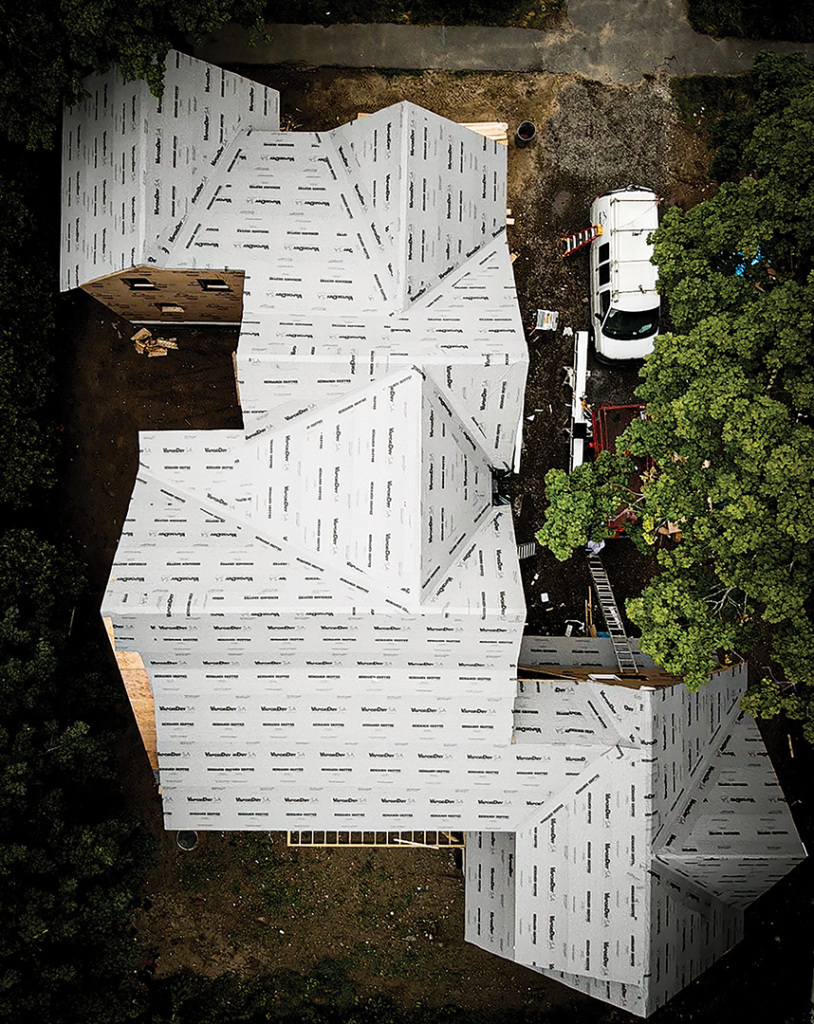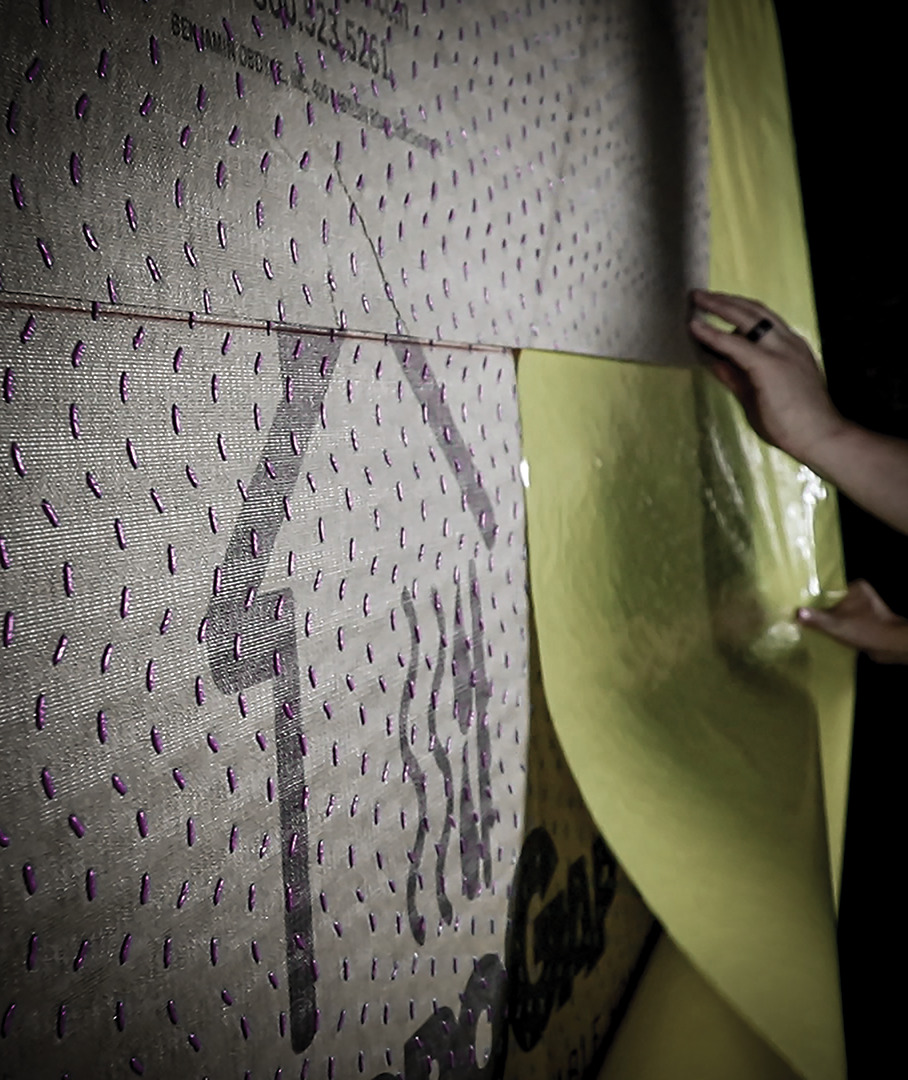For a long time, rubber and asphalt underlayments, sometimes generically called ice/water protectors, barriers, or shields, have been a go-to roofing underlayment option to protect the home against rain and ice damming. But as home designs change, new acrylic-adhesive roofing underlayments may provide a better alternative to asphalt-based ice/water protectors.
In fact, VaporDry SA roofing underlayment offers a number of advantages to both installers and homeowners that building pros should consider making the switch.

VaporDry® SA Samples
GET YOUR FREE VAPORDRY® SA SAMPLES TODAY
Ice/Water Protectors vs. Acrylic-Adhesive Roofing Underlayment
Though ice/water barriers can block wind-driven rain from penetrating the roofing system, there are a few drawbacks that can be addressed by newer innovations that use acrylic adhesive.
Temperature Limitations
Asphalt-based underlayments are temperature sensitive—if it’s too hot, they can ooze and get overly sticky, so they may slide or slough rather than adhering properly; if it’s too cold, they’re not sticky enough. This means there’s a relatively small window of time to apply the material.
VaporDry SA, which has an acrylic adhesive, is not as vulnerable to high or low temperatures, and can be installed in a range from 25°F to 150°F. Plus, the material is repositionable, including if it comes in contact with itself.
Roll Weight and Coverage
Asphalt-based ice/water barriers come in heavy rolls that provide less coverage. The 3-foot-wide rolls can’t always meet ice damming codes with a single row. An additional row may be needed for large overhangs and roof pitches over 7:12 to meet code compliance.
VaporDry SA acrylic-adhesive roofing underlayment weighs less for easier handling, and it comes in 4.75-foot-by-80-foot rolls that offer 380 square feet of coverage per roll.
Exposure Restrictions
Many asphalt-based underlayments must be covered within 30 to 60 days, depending on the manufacturer; otherwise, they may begin to break down from UV exposure.
VaporDry SA can be left exposed for up to 120 days, allowing builders to accommodate larger projects and unforeseen delays in roofing delivery or installation.
Horizontal-Only Applications
Ice/water protectors are not typically designed to be used on vertical surfaces, so they’re usually not ideal for tricky roof-to-wall intersections. These areas are particularly susceptible to moisture intrusion if not covered and flashed properly.
VaporDry SA uses the same acrylic adhesive as HydroGap SA, so it can adhere to the vertical wall surface, allowing for easy transitions from roof to wall and combining with roof flashing to protect the area and ensure proper drainage. (See our previous blog post for details and videos.)
Vapor Permeability
Asphalt-based underlayments are vapor closed, which can lead to trapped moisture in the roof assembly. This is a growing concern as more homes have conditioned attics, which creates more moisture vapor from inside the system.
VaporDry SA is vapor permeable, with a rating of 14 perms. This allows interior moisture to escape to help maximize the roof’s drying potential.
Build Better with Innovative Materials
As home designs change and weather grows more extreme, new approaches to the home’s building envelope are more critical than ever. Innovations like the acrylic adhesive of VaporDry SA roofing underlayment help accommodate not only the changing dynamics of the home environment but also ease some long-standing installation challenges and tricky roof layouts.
Ready to try it for yourself? Request a sample of VaporDry SA or get in touch with us for support and resources to help Transform Your Craft.




